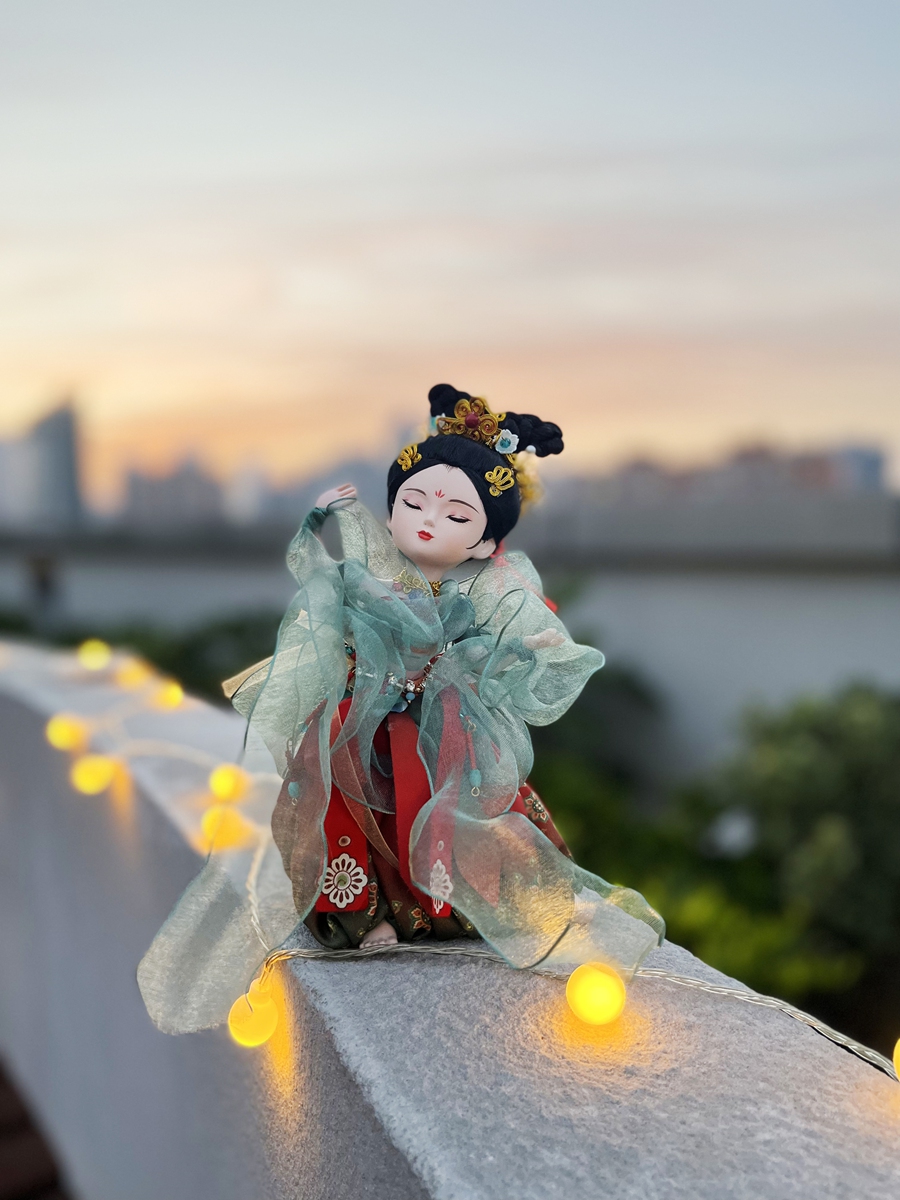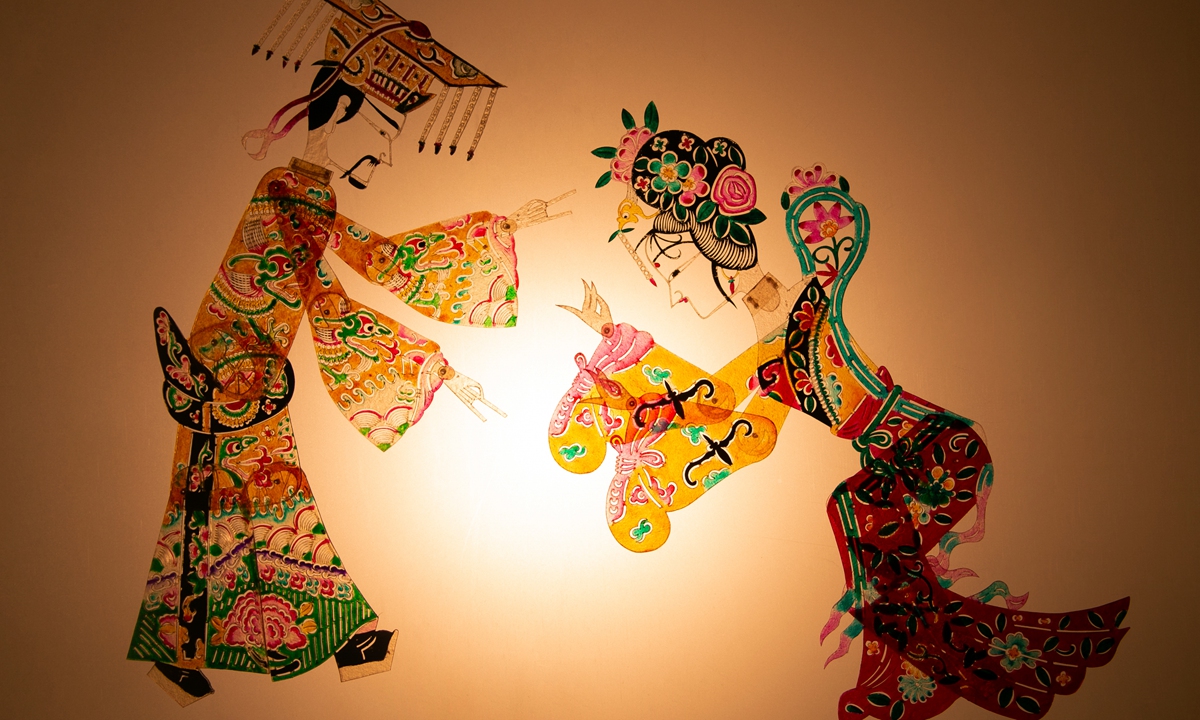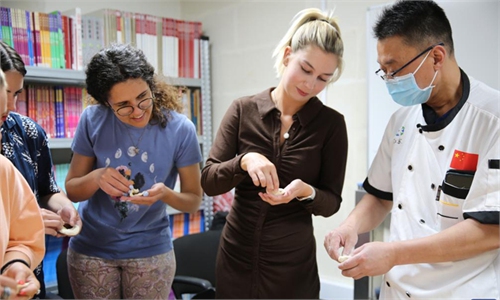ARTS / ART
China’s Gen Z mixes tradition with modernity
New vitality

A cultural product made by Henan Museum Photo: Courtesy of Henan Museum

Chinese shadow puppetry Photo: VCG
China is launching more than 6,300 activities to celebrate the annual Cultural and Natural Heritage Day, which falls on Saturday. Among the activities, those focusing on intangible cultural heritage have risen to the fore as tradition has become a new craze among millennials and Generation Z.With the rising popularity of traditional Chinese culture, a lot of young people, including some vloggers, have been showing increased interest in ancient crafts and have started to share these skills through social media channels in China and abroad.
According to the official website of China Intangible Cultural Heritage Network, China currently has 1,557 national intangible cultural heritage representative projects across 10 categories, 42 of which have been inscribed on UNESCO's intangible cultural heritage list.
Creative ideas
Suona, a representative national wind instrument that has been included on China's intangible cultural heritage list since 2006, has allowed 29-year-old performer Chuanzi to earn more than 3.9 million fans on Douyin, the Chinese regional version of Tik-Tok.
Starting playing when he was around 6 years old, at the age of 19 he began experimenting with fusing traditional with trendy electronic music because he wanted to help people achieve a new understanding of the folk instrument.
"In the past, suona has been stereotypically seen as an instrument on weddings or funerals, but it has such a distinctive Chinese sound, which to me makes it powerful when mixed well with electronic music," Chuanzi noted.
In 2020, the young musician brought suona to China's biggest electronic music festival VAC for the first time ever. He recalled that it was the first time he saw thousands of young people attracted by the instrument, and his creative mix has inspired suona players to be creative too.
His creative suona music has also been enjoyed by Western fans including popular DJ Alan Walker, who gave a video of one of Chuanzi's performances a thumbs-up on social media.
"The best way to inherit such an intangible cultural legacy is to combine it with today's trends, but still be able to teach the younger generation about its cultural roots," he said.
Data from Tencent's music streaming platform Kugou Music shows that more than 100 million Gen Z users listen to music content with traditional elements every month.
"Young people gain traditional skills, and combine them with some cool ideas of their own to make creations like Chuanzi does. I think it is a healthy development for intangible cultural heritage skills," Wang Wenhua, a pottery veteran who has worked in China's "Porcelain Capital" Jingdezhen in East China's Jiangxi Province for the past 14 years, told the Global Times.
Welcomed by the world
Wang shares some Chuanzi's experience. After studying how to make traditional porcelain wares at Jingdezhen, Wang wanted to try something different - making micro porcelains.
He never expected that his work would surprise viewers in China, and that his short videos showing him making a miniature vase only 5 millimeters tall would earn over 45 million views and 4.2 million likes on Douyin. His videos have also made it overseas, earning millions of likes on TikTok.
"I can feel that young generations really like traditional Chinese handicrafts since most of my buyers are young people, and I have taken on a lot of young apprentices," he said.
Similar to Wang, Yan Hong, one of the most popular young bloggers on video-sharing platform Bilibili with 760,000 fans and more than 33.74 million views, is famous for her traditional Chinese handicrafts, especially filamentary silver hovering jewelry. An intangible cultural heritage of Chengdu in Southwest China's Sichuan Province, the 1,700-year-old handicraft is famous for using thin, nearly invisible filaments of silver to make jewelry with parts that appear to "hover" in the air. She told the Global Times that before learning the heritage skill, she only focused on the style of her works without drawing a draft. But now, she has developed the habit of having a set of standard operating methods for each step, including what specification of filament should be used for the frame or whether a space should be filled with filigree when making exquisite headdresses.
"Chinese culture is profound. As a young designer, I have the duty to continue introducing it to more people around the world," Yan said, explaining why she started a YouTube channel, which quickly garnered a lot of attention among foreign audiences. Some of them have even followed her video guides and tried to make traditional Chinese headdresses themselves.
On June 3, a total of 163 cultural products from 19 institutions, including the Henan Museum, debuted in Amiens, France, at the China Pavilion of a local festival. The pavilion is hosted by the Association for the Development of Educational Exchanges between China and France.
Song Hua, director of the Henan Museum's Cultural Products Department, told the Global Times that a doll made by the intangible heritage skill called Juan Ren, also known as a "Chinese Barbie doll," has been very popular among French customers.
Song said they have produced a lot of cultural products infused with national intangible heritage, and the archaeological blind boxes they have introduced have also received a big welcome abroad.
"The prosperity and development of traditional handicrafts shows young people's high recognition of Chinese culture as well as the increasing global influence of Chinese culture around the world," Zheng Changling, a research fellow at the Chinese National Academy of Arts, told the Global Times.
Additionally, Chinese streaming sites that young people are fond of, have also hosted various events and programs to help raise public awareness and focus attention on China's cultural heritage. An online video exhibition channel launched by streaming site Youku includes different programs including Shakuhachi: One Sound One Life, about the ancient bamboo flute shakuhachi that was introduced from China to Japan, and The Great Shokunin, which introduces China's great craftsmen.
All in all, young people have been doing their all to boost the development of these cultural treasures.




